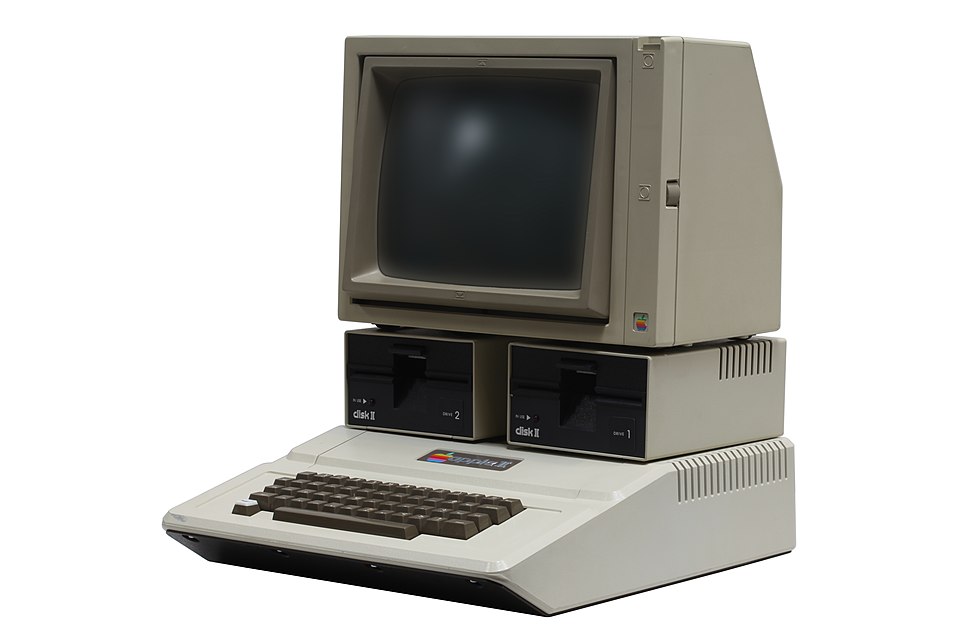The Apple II: A Revolutionary Personal Computer
The Apple II is a hugely significant computer in history, often credited with popularizing personal computing. Here’s a comprehensive overview, covering its history, features, impact, and legacy:
1. History & Development (1976-1993)
- Genesis (1976): Developed by Steve Wozniak and Steve Jobs, the Apple II was born out of the Homebrew Computer Club in Silicon Valley. Wozniak, a brilliant engineer, designed the computer as a hobby project, aiming for a user-friendly and affordable machine. Jobs, the marketing and business mind, saw its potential for commercialization.
- First Model (Apple II): Released in April 1977, it was a significant departure from the kit computers of the time (like the Altair 8800). It came fully assembled in a plastic case, with a keyboard and color graphics capabilities. It initially sold for $1,298 (about $6,000 today).
- Apple II Plus (1979): Included Applesoft BASIC built into ROM, making it easier for users to program. This was a crucial step in making the computer accessible to a wider audience.
- Apple IIe (1983): The most popular model. “e” stood for “enhanced.” It featured a more professional keyboard, improved memory management, and lower cost. It became a staple in schools and homes.
- Apple IIc (1984): A compact, portable (relatively speaking for the time) version with a built-in floppy disk drive. It was aimed at the education and business markets.
- Apple IIGS (1986): The most advanced Apple II model. “GS” stood for “Graphics and Sound.” It featured a 16-bit processor, significantly improved graphics and sound capabilities, and a graphical user interface (GUI) that foreshadowed the Macintosh.
- Discontinuation (1993): Apple officially discontinued the Apple II line in 1993, marking the end of an era. However, a dedicated community continues to support and use these machines today.
2. Key Features & Specifications (Vary by Model, but generally…)
- Processor: Initially a 1 MHz 6502 processor. Later models (IIGS) used a 2.8 MHz 65C816 processor.
- Memory: Started with 4KB of RAM, expandable to 48KB (and beyond with expansion cards). Later models could support much more.
- Graphics: Color graphics were a major selling point. Early models offered low-resolution (40×48 pixels) and high-resolution (280×192 pixels) modes. The IIGS offered a much wider range of colors and resolutions.
- Sound: Simple sound capabilities initially, but the IIGS had a sophisticated Ensoniq 5503 Digital Oscillator Chip, capable of producing high-quality sound.
- Storage: Initially used cassette tapes for program storage. Floppy disk drives (5.25-inch) became standard, offering much faster and more reliable storage. Hard drives were available as upgrades.
- Ports: Included a variety of ports for connecting peripherals like printers, modems, joysticks, and disk drives. Expansion slots allowed for adding functionality.
- Operating System: Initially, the Apple II ran directly from BASIC in ROM. Later, Apple DOS and ProDOS were developed as more sophisticated operating systems. The IIGS had its own GUI-based operating system called GS/OS.
3. Software & Applications
The Apple II had a vast library of software developed for it, including:
- VisiCalc (1979): The first spreadsheet program, and a “killer app” that drove many businesses to purchase the Apple II. It revolutionized business computing.
- Word Processing: WordStar, Apple Writer, and others.
- Educational Software: A huge market for the Apple II, with programs teaching everything from math and reading to programming. (e.g., Oregon Trail, Number Munchers)
- Games: A thriving gaming scene, with classics like AppleSoft BASIC games, and later, more sophisticated titles. (e.g., Prince of Persia, Karateka)
- Programming Languages: BASIC (built-in), Pascal, Logo, FORTRAN, and more.
- Desktop Publishing: Early desktop publishing software.
- Database Management: Early database programs.
4. Impact & Legacy
- Popularized Personal Computing: The Apple II made computers accessible to individuals and small businesses, moving them out of the realm of large corporations and research institutions.
- Education: It became a dominant force in education, teaching a generation of students about computers and programming.
- Business: VisiCalc and other business applications helped to transform the way businesses operated.
- Innovation: The Apple II fostered a vibrant ecosystem of developers and entrepreneurs, leading to further innovation in the computer industry.
- Foundation for Apple: The success of the Apple II provided the financial foundation for Apple to develop other groundbreaking products, like the Macintosh.
- Continuing Community: A dedicated community of enthusiasts continues to preserve, restore, and use Apple II computers today. There are active forums, websites, and even hardware and software development ongoing.
5. Where to Learn More
- Apple II History: https://www.apple2history.org/
- Wikipedia – Apple II: https://en.wikipedia.org/wiki/Apple_II
- YouTube – Restoration and Usage Videos: Search “Apple II” on YouTube for countless videos showing the computer in action and restoration projects.
In conclusion, the Apple II wasn’t just a computer; it was a cultural phenomenon that helped shape the modern world. Its user-friendliness, affordability, and vast software library made it a beloved machine for millions, and its legacy continues to inspire and influence the technology we use today.
Is there anything specific about the Apple II you’d like to know more about? For example, are you interested in:
- Specific models (IIe, IIGS, etc.)?
- Programming on the Apple II?
- Games available for the Apple II?
- The technical details of its hardware?
- Its role in education?
